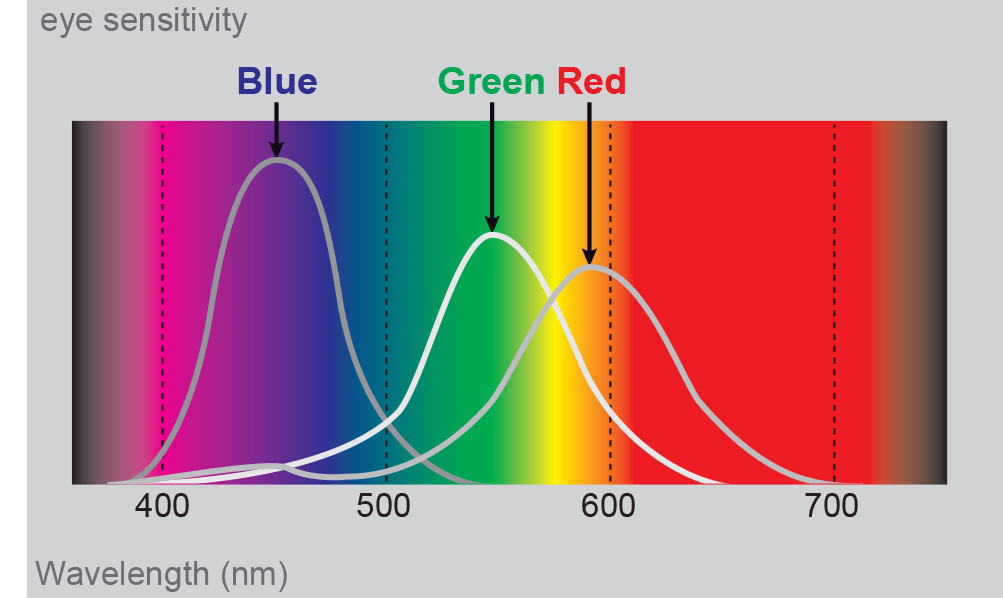Tri-stimuli theory
Introduction
We experience light of different wavelengths as different colours. The retinas in our eyes have cones (light-sensitive receptors) that send signals to the brain when they are hit by photons that correspond to different wavelengths in the visible range of the electromagnetic spectrum. There are three different kinds of cones, responding predominantly to blue, green and red light. The signals sent to our brain by these cones give us sensations of colour (additive colour system). In addition to cones, we have rods, which sense brightness. The rods can operate with less light than the cones and do not contribute to colour vision. For this reason, objects appear less colourful in conditions of low light.
Explanation
This knowledge of the three stimuli is important for displaying colour. Colour television screens and computer monitors are composed of a large number of small dots arranged in a regular pattern of groups of three: a red, a green and a blue dot. At a normal viewing distance from A TV screen, for example, we cannot distinguish the individual dots. We can individually trigger these dots and vary the amount of light emitted from each of them. All colours visible on such a screen are, therefore, created by mixing different amounts of red, green and blue. This mixing takes place in our brain. When we see a mixture of red (say, 700 nm) and green (530 nm) light, we get the same impression as when we see monochromatic yellow light (i.e. with a distinct wavelength of, say, 570 nm). In both cases, the cones are apparently stimulated in the same way. According to the tri-stimuli model, therefore, three different kinds of dots are necessary and sufficient to recreate the sensation of all the colours of the rainbow.

Outgoing relations
- Tri-stimuli theory is used by Colour space
- Tri-stimuli theory is used by Image display
Incoming relations
- Human Vision is based on Tri-stimuli theory
- RGB is based on Tri-stimuli theory
- IHS is related to Tri-stimuli theory
- YMC is related to Tri-stimuli theory